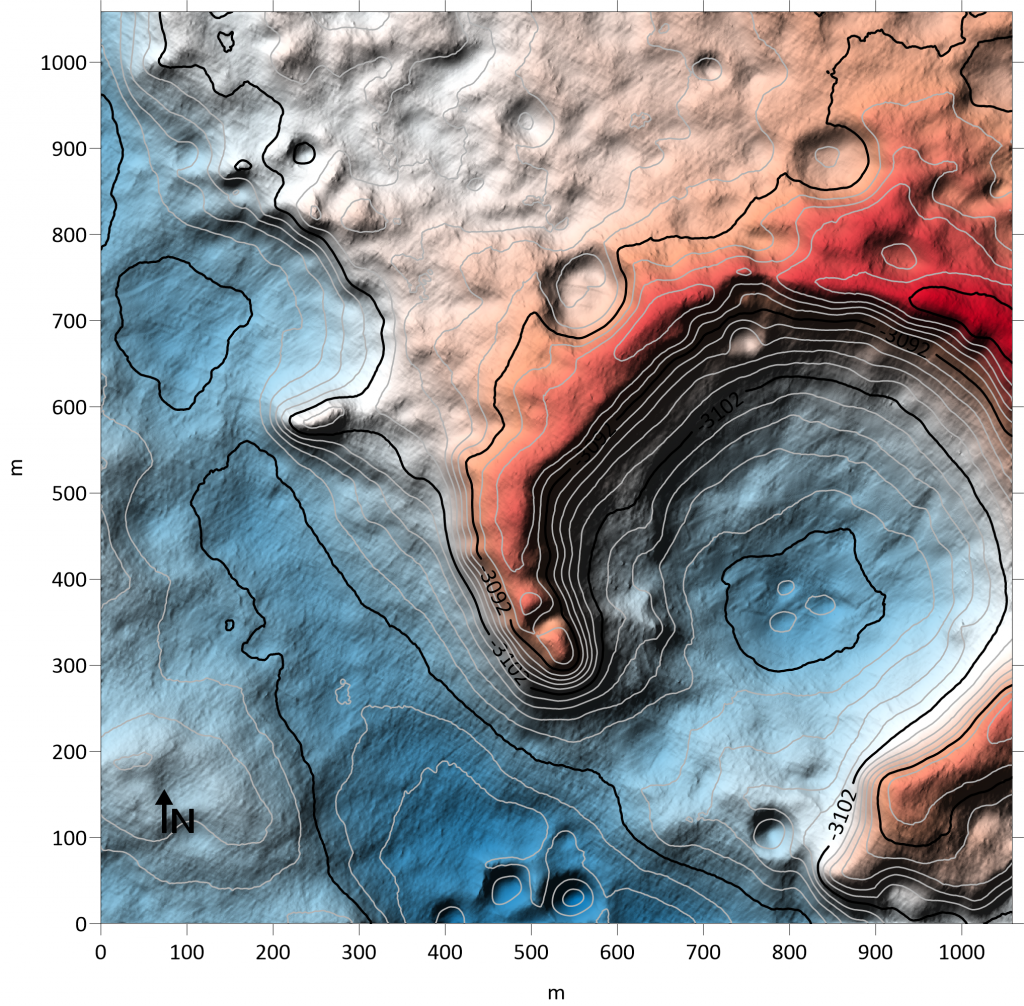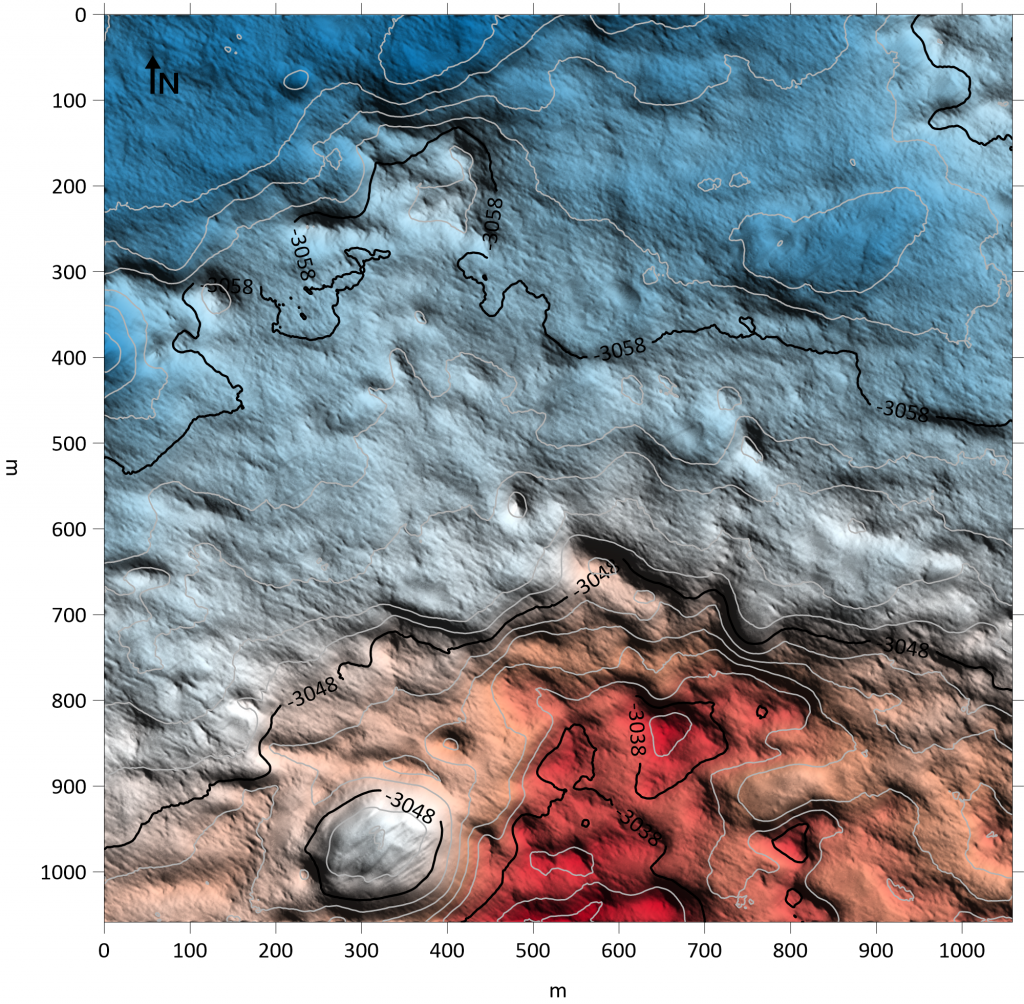3D models of Mars to aid Rosalind Franklin rover in her quest for ancient life
Scientists at TU Dortmund University have generated high-accuracy 3D models of terrain within the landing ellipse of the ESA/Roscosmos ExoMars rover, Rosalind Franklin. The Digital Terrain Models (DTMs) have a resolution of about 25 cm per pixel and will help scientists to understand the geography and geological characteristics of the region and to plan the path of the rover around the site.
To increase the accuracy of the models, the team has developed an innovative technique that integrates atmospheric data into the digitally-generated scenes. The models will be presented by Kay Wohlfarth at the EPSC-DPS Joint Meeting 2019 in Geneva on Monday 16 September.
The DTMs are based on high-resolution imagery of Mars from the HiRISE instrument on NASA’s Mars Reconnaissance Orbiter. HiRISE imagery has been widely applied to the classic stereo method of combining two images taken from slightly different angles to create a 3D picture of the landscape. However, conventional stereo techniques have limitations when applied to the featureless, homogeneous regions that characterise many dusty and sandy planetary surfaces, including the rover’s landing site.
Oxia Planum, the landing site chosen by ESA’s ExoMars Landing Site Selection Working Group for Rosalind Franklin, is comparatively flat to minimise the risk of a hard landing and to ensure accessibility for the rover to carry out its mission. The region contains clay minerals and structures from ancient river beds that may bear hints of past traces of life.
To enhance the DTM, the team from TU Dortmund University has applied a technique called ‘Shape from Shading’ in which the intensity of reflected light in the image is translated into information on surface slopes. This slope data is integrated into the stereo imagery, giving an improved estimate of the 3D surface and achieving the best resolution possible in the reconstructed landscape.
Kay Wohlfarth explained: “With the technique, even small-scale details such as dune ripples inside craters and rough bedrock can be reproduced.”
Marcel Hess, first author of the study, said: “We have taken special care over the interaction between light and the martian surface. Areas that are tilted towards the Sun appear brighter and areas that are facing away appear darker. Our approach uses a joint reflectance and atmospheric model that incorporates reflection by the surface as well as atmospheric effects that diffuse and scatter light.”
The Rosalind Franklin ExoMars rover will carry a suite of scientific instruments to analyse rocks and the surface environment at Oxia Planum. To look beneath the surface, it carries a drill that will retrieve samples and deliver them to an onboard laboratory designed to detect biosignatures, as well as instruments to probe the subsurface water content. The mission will launch in the summer of 2020 on a Russian Proton-M launcher and arrive at Mars in March 2021.
ESA ExoMars pages: www.esa.int/exomars.
Images

www.europlanet-society.org/wp-content/uploads/2019/09/ROI1.png

Credit: TU Dortmund/NASAJPL-Caltech
https://www.europlanet-society.org/wp-content/uploads/2019/09/ROI2.png
Video
A video of the Digital Elevation Model of the landing site can be found at: https://youtu.be/L0HgyyqbsPg
Scientific Contact
Marcel Hess
Image Analysis Group
TU Dortmund University
Germany
marcel.hess@tu-dortmund.de
Kay Wohlfarth
Image Analysis Group
TU Dortmund University
Germany
kay.wohlfarth@tu-dortmund.de
Christian Wöhler
Image Analysis Group
TU Dortmund
Germany
christian.woehler@tu-dortmund.de
Ottaviano Ruesch
European Space Agency
Noordwijk
The Netherlands
ottaviano.ruesch@esa.int
Media Contact
Anita Heward
EPSC Press Officer
+44 7756 034243
anita.heward@europlanet-eu.org
epsc-dps-press@europlanet-society.org
Livia Giacomini
EPSC Press Officer
epsc-dps-press@europlanet-society.org
Adriana Postiglione
EPSC Press Officer
epsc-dps-press@europlanet-society.org
Shantanu Naidu
DPS Press Officer
dpspress@aas.org
During the meeting, the EPSC-DPS Press Office can be contacted on +41 22 791 9617.
Further Information
Europlanet
The Europlanet Society, launched in September 2018, is an organization for individual and corporate members to promote the advancement of planetary science and related fields in Europe. The Society provides Europe’s planetary science community with a platform to exchange ideas and personnel, share research tools, data and facilities, define key science goals for the future, and engage stakeholders, policy makers and European citizens with planetary science. The Europlanet Society is the parent organisation of the European Planetary Science Congress (EPSC).
Europlanet Society website: www.europlanet-society.org
EPSC-DPSC 2019 Joint Meeting 2019 website: www.epsc-dps2019.eu
DPS
The Division for Planetary Sciences (DPS), founded in 1968, is the largest special-interest Division of the American Astronomical Society (AAS). Members of the DPS study the bodies of our own solar system, from planets and moons to comets and asteroids, and all other solar-system objects and processes. With the discovery that planets exist around other stars, the DPS has expanded its scope to include the study of extrasolar planetary systems as well.
The AAS, established in 1899, is the major organization of professional astronomers in North America. The membership (approx. 7,500) also includes physicists, mathematicians, geologists, engineers, and others whose research interests lie within the broad spectrum of subjects now comprising contemporary astronomy. The mission of the AAS is to enhance and share humanity’s scientific understanding of the universe, which it achieves through publishing, meeting organization, education and outreach, and training and professional development.

